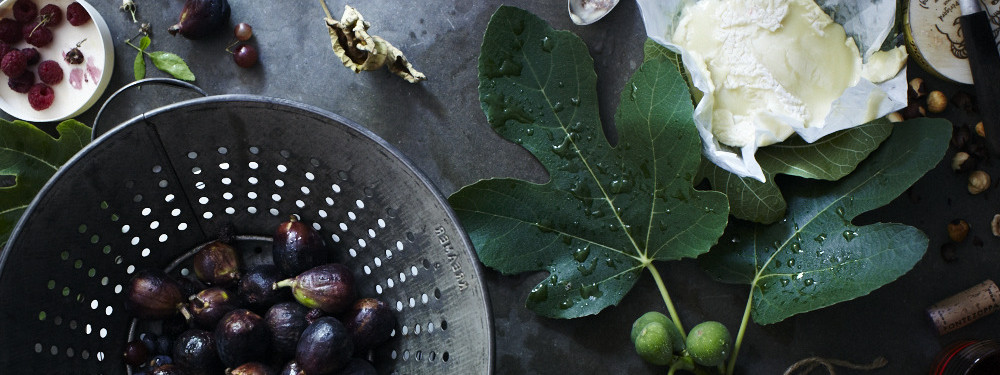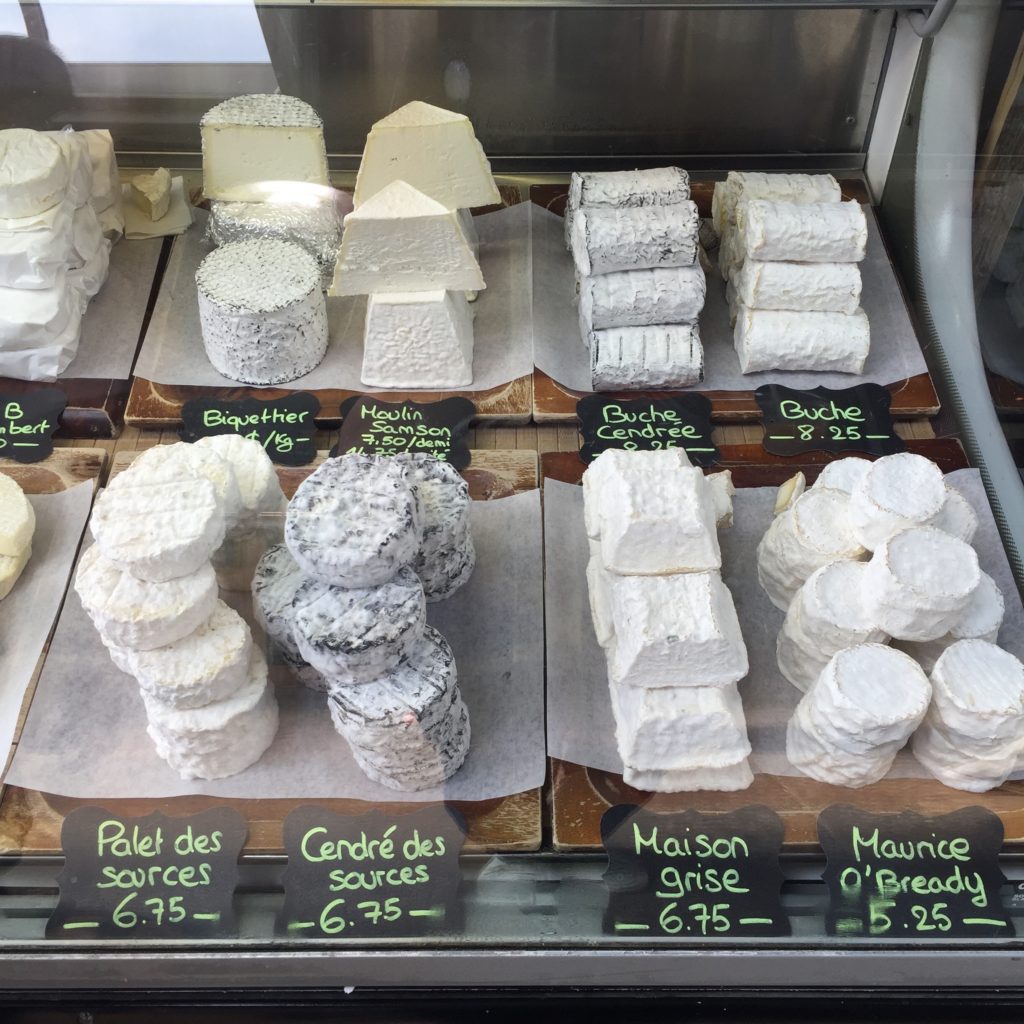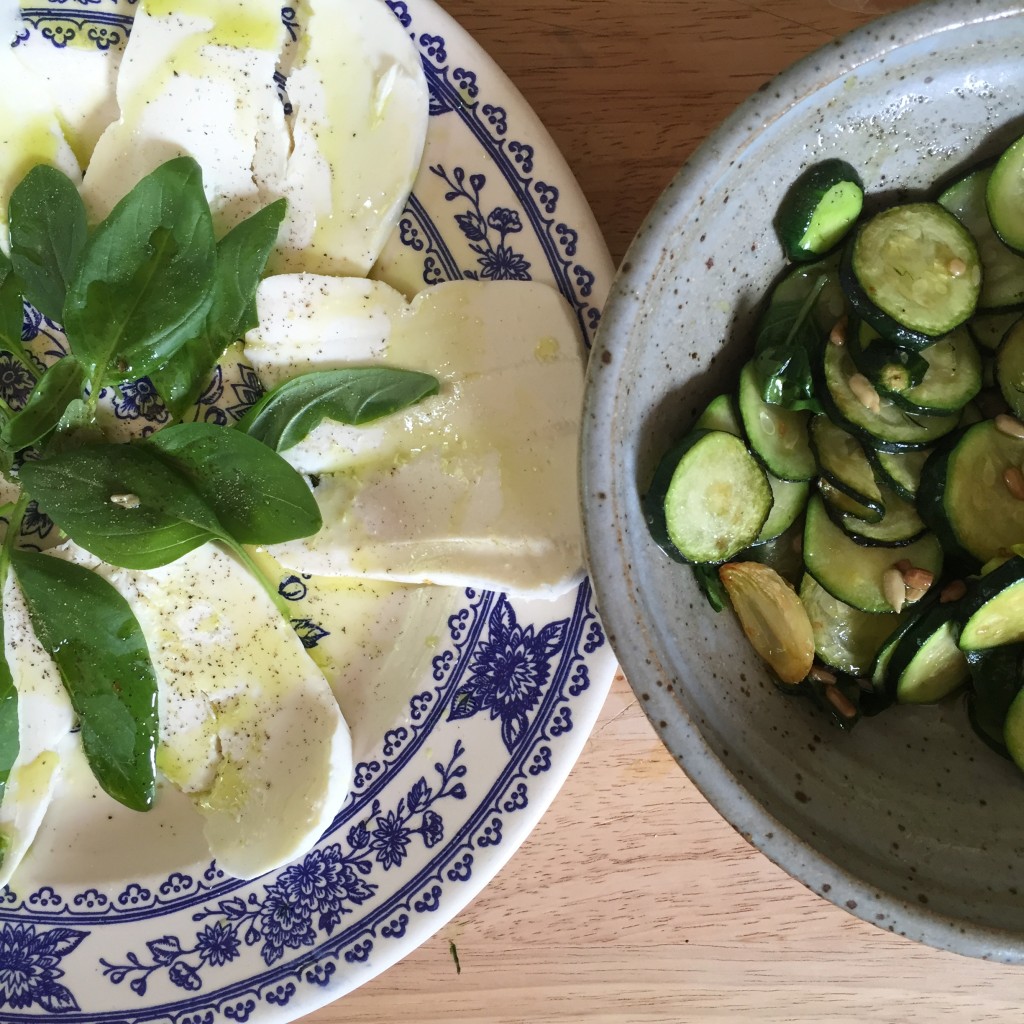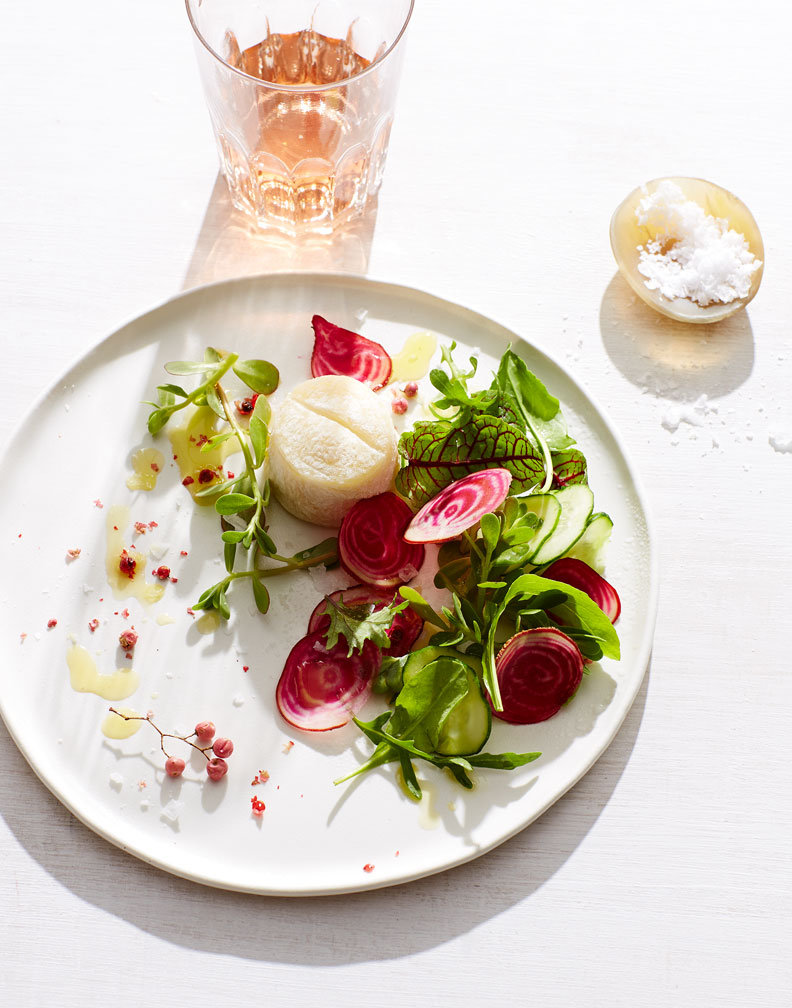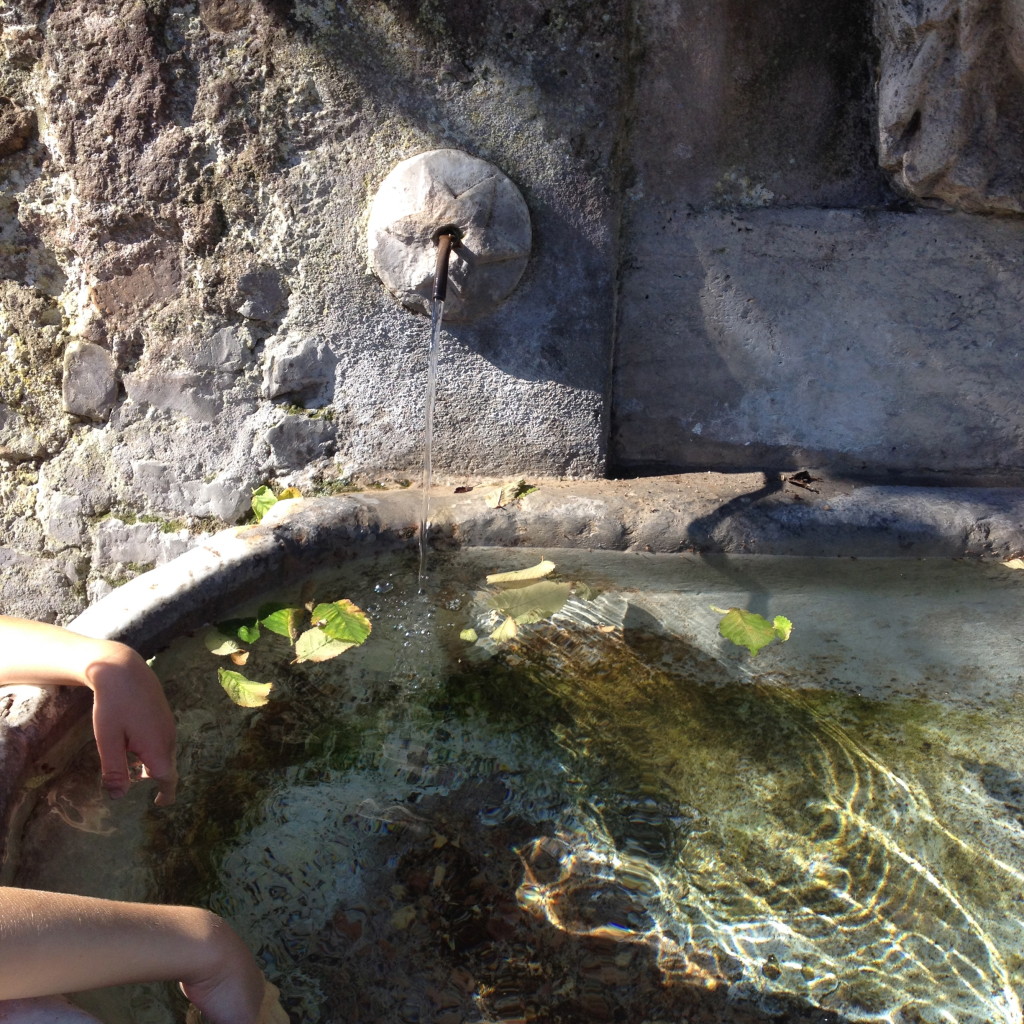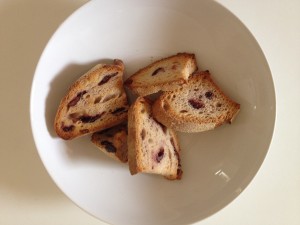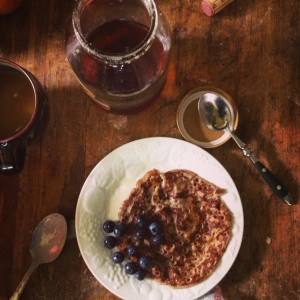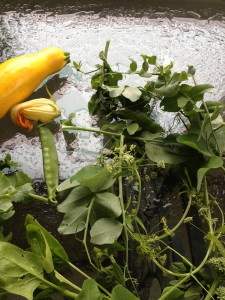
Pretty Thinnings in the Rain
We stopped by Sally’s garden just before the rain came, to help her pick peas. She’s been waiting and waiting for them. She likes to make a beautiful soup with them, simply puréeing blanched peas and a bit of lettuce with mint and broth, and thinning it all with cream. This takes quite a few peas, so I don’t ask for any today. Besides, I know that I’ll be given free run of her garden later this week when she’s away, and we’ve already had our share of lettuces and herbs. Living as I am, from moment to moment these days, I have no agenda other than to visit my friend and lend a hand.
As we picked and talked, a gentle mist blew in and settled around us, lower and lower. Sally discarded fistfuls of pea vines and tendrils, and cast them between plant rows. I couldn’t help but snip the tops, and started my own little pile.
She gave a golden zucchini to my young son, who showed surprising enthusiasm. A zucchini blossom had fallen on its own- so he took that too. He then handed me one precious pea, and I added it to my pile. Baby spinach plants needed a bit of thinning, so those went onto the pile too. Oh, and a few sprigs of basil, some celery flowers (so pretty, why not?) and chives. Sally handed two haricots verts, thin as bobby pins, to my little one – he ate them up before I even got a look. And lastly, we were offered two tiny broccoli heads, so we snapped their tender stalks.
Just like that! Peas all picked, appetite awakened, and he was off. As he ran up the path, all skinny legs and sandals, the drizzle turned to rain. Dinner had revealed itself and I followed with both hands full.
Pasta with 8 Vegetables and Cream
This is an invitation rather than a recipe: if you find yourself with an assortment of tender vegetables, and the cream to enrich a sauce, I say take it and run. In terms of vegetable combinations, think of similar colors and varied textures. We are only 3 now, but I made enough to serve 4
3/4 pound pasta (short, tubular or curved shape)
coarse salt, freshly ground pepper
extra virgin olive oil for cooking
3-4 handfuls mixed vegetables, such as: spring onion bulbs or leeks, zucchini and summer squash, sugar snap peas, asparagus, haricots verts, english peas, corn kernels, small broccoli florets, baby spinach leaves, pea shoots or other tender greens, basil, chives, mint.
1/4-1/3 cup fresh heavy cream
parmesan or pecorino romano for grating
Bring a large pot of well-salted water to a boil and add pasta; return to a boil and stir. While it’s cooking, heat a large sauté pan over medium-high heat and coat the bottom generously with olive oil.
Make sure vegetables are cut to similar size and add the firmest ones first: chopped onion or leek, diced summer squash or zucchini, asparagus stalks, small broccoli florets and sliced sugar snap peas. Don’t crowd the pan with more than one dense layer; sprinkle with salt and cook, stirring occasionally, until barely tender- do not let them brown. Add remaining vegetables in succession- the firmest first. Reserve the most delicate leaves and herbs.
Stir to combine vegetables, and add the cream. Simmer rapidly until cream reduces by about half, 2-3 minutes. Stir baby spinach, basil, and other herbs into the pan. Add drained pasta when it is al dente, plus about 1/2 cup pasta water, tossing with cream and vegetables until all are combined in a creamy sauce; add more pasta water if the pasta needs more coating, and season as needed. Divide among bowls and serve with cheese sprinkled on top.
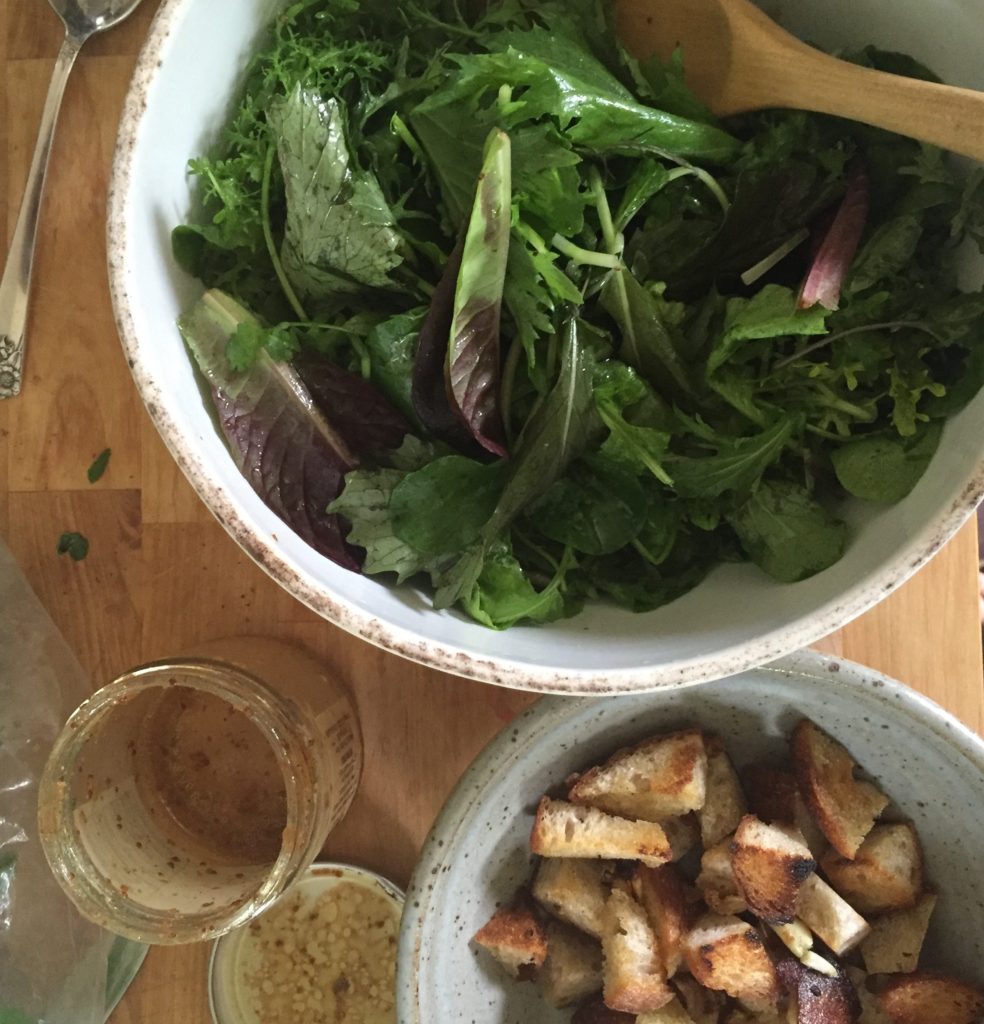 Summer cooking is… Standing barefoot in the kitchen next to the screen door, stirring pieces of day-old bread and garlic cloves in a cast iron skillet, until the garlic cloves soften enough that you can smash them with the back of the wooden spoon. They let out a sweet, roasted smell and infuse the olive oil that slicks the bottom of the pan.
Summer cooking is… Standing barefoot in the kitchen next to the screen door, stirring pieces of day-old bread and garlic cloves in a cast iron skillet, until the garlic cloves soften enough that you can smash them with the back of the wooden spoon. They let out a sweet, roasted smell and infuse the olive oil that slicks the bottom of the pan.